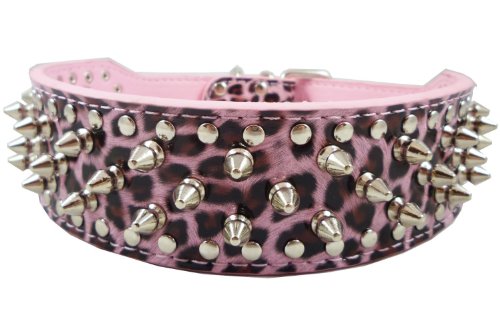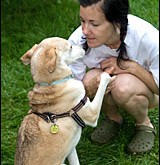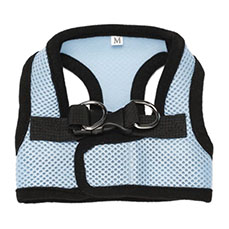
Do you have a dog that is very shy around people or other dogs? Are you reluctant to bring your pet to new or strange environments because you know he/she will be upset? Believe it or not, you (and your dog) are not alone. Shyness is a common behavioural trait in dogs that is not just ‘due to their personality’. It is a trait that is shaped by how the dog was raised or what the dog is accustomed to. Contrary to popular belief, such a trait can be changed and your terrified dog can become an outgoing social pet. This article explores why some dogs are more fearful than others and what can be done about it.
Living with a fearful dog can be both frustrating and heart-wrenching. Dogs can be fearful of many things, including a friendly hand, strange objects, or other dogs. It can be frustrating when the dog is so consumed by its insecurities that he/she cannot express the love that enriches the human-animal bond. If your dog is a fear-biter, it is not only a danger to you and your family, but it often results in euthanasia. Many people believe that once a dog is fearful, it becomes their ‘personality’ and cannot be changed. That is untrue! With love and patience, any dog can overcome their fears and be a well-adapted, social pet.
Understanding why your dog is shy is the first step to alleviate the problem. Dogs become fearful for the same reasons that humans get fearful: inappropriate socialization, poor health, abuse, and genetics.
Timid and fearful dogs are most often due to inadequate socialization to other people and/or dogs. Just like children who are not given enough time, attention and learning opportunities often do not develop the ability to cope with difficult situations, dogs that do not have an enriched environment may have a difficult time adjusting to new environments or dealing with strange people/animals. Poorly socialized dogs can be found at places like animal shelters, pet shops, or in busy households where the amount of dogs exceeds the amount of people available to spend enough time with the dogs. For example, a puppy may be purchased by a well-meaning family, but the family becomes very busy and does not have enough time to socialize or train the dog. The dog is often isolated at home and is not well trained. As the dog ages, its bad habits have not been corrected and the family tires of putting up with the dog. The dog ends up at a kennel where he/she is overwhelmed and becomes a fearful animal. Some people buy a dog without realizing how much time and energy is required to raise one properly. It is important to spend as much time exposing the dog to new environments and other people and animals, especially when the dog is very young.
Another reason why dogs become fearful is when they feel physical pain due to sickness or trauma. For example, a dog that cannot see well becomes fearful of new environments or a dog with back pain may shrink away from human contact if it is painful to be touched. Pain could cause a dog to quiver, making them look like they are shaking in fear. To determine if it is ill-health that is causing ‘fear’ in your dog, he/she should visit the veterinarian to rule out any possible causes of pain.
Like humans, physical abuse is a cause of fear in animals. A dog that flinches when an open hand is raised over their heads is a sign that the dog may have been physically abused in the past. Sometimes, the abuse may be done unintentionally, like by young children who cannot entirely differentiate between a living dog and a stuffed toy. They may pull the dog’s tail or scream and run after the dog.
Along with environmental influences, studies have shown that genetics play an important part in a person’s behaviour. The same principle applies to dogs. A puppy may have just been born shy. This may function as a species’ survival mechanism. Every pack has a leader that is extroverted and curious. But there needs to be one introverted individual that is more cautious to ensure that the entire pack does not quickly and carelessly run off a cliff. This means that your shy dog is not an abnormal animal that is worse than others. He/she is just on one end of the spectrum of animal behaviour. Although shy individuals exist in every breed, shyness is more common in some breeds than others. For example, Sheepdogs are more independent and reserve because they are bred to be able to guard sheep in a remote field where it is important to be cautious of one’s surroundings and suspicious of strangers.
Regardless of the cause of your dog’s fearfulness, the problem is generally treated the same. The goal is to gradually acclimatize the dog to the fearful situation and reinforce the idea that nothing bad will happen in such circumstances. This gradual process may take anywhere from a couple weeks to a couple years, depending on the severity of the problem, the individual dog’s progress, and the owner’s commitment. For example, a dog that is afraid to walk out on a busy street may begin with short walk sessions in a quiet neighbourhood and a slow introduction to other novel surroundings. Bring the dog out on short walks and encourage him/her by talking in happy, confident tones. Keep the walks short at first (10 minutes) and gradually increase as the dog becomes more confident. Do not just carry the dog everywhere because the dog will not gain confidence that way. You may reward with treats during or after each session. A nervous dog that has never gone outside into the big world may seem to grow more fearful as you continue to bring the dog out more. But do not give up! Be persistent and continue with the encouragement. Eventually, you will be rewarded and will be able to introduce your dog to new environments such as dog parks or busy plazas. Do not force your dog into stressful situations. Go at the dog’s own pace and be conscious of the effort your dog is making as well. It is important that the dog suffers no bad experiences during the sessions. After all, the dog is not going to get over his/her fear if attacked by a vicious dog or if a child is allowed to pull his ears. The same principle applies if the dog is fearful of strangers or other dogs. Gradually introduce the dog to his/her fear and praise the dog for the behaviour you want.
Do not reward the dog for shy behaviour. If the dog is shivering in fear or urinates in submission, ignore the behaviour because they are often uncontrollable acts when your dog is in a state of fear. Reward the dog when he/she is acting brave or displaying outgoing behaviour. Of course, this is easier said than done. It is natural to want to hold the dog when he/she is startled by a loud noise. You have to break your habit in order to allow the dog to grow more confident. Your dog will feed off your nervousness. The next time a loud noise startles your dog, distract the dog by playing with a toy. Speak in a confident voice and give no reason for your dog to be afraid. Consistency is important, as it is in any aspect of dog training.
If the dog is afraid of particular objects, try teaching the command “explore” or “what is it?” This command should let your dog know that the new object is safe. Place a treat on the floor and say “explore”. The dog will soon associate this word with a positive finding. Place the treat in a foreign object and repeat. Once your dog understands this command, introduce the dog to the object that makes him/her nervous. The dog will eventually approach the object in search for the yummy treat. Praise the dog lavishly for his/her progress.
It is unfair to assume that people with bad childhoods never overcome their experiences. Similarly, it should not be assumed that a dog with less-than-perfect socialization cannot overcome their deficits. With patience, a shy dog of any age can bloom into an outgoing, social animal. Watching an animal transform and gain confidence is a rewarding experience that makes every effort worth it. No matter what your dog’s age or background, it is never too late to help him/her change for the better.
By Amy Cheung – Pets.ca writer
 Designer Dog Collars
Your dog can be stylish too!
Designer Dog Collars
Your dog can be stylish too!
 Dog Tricks – Dog Training Level 1
Dog Tricks – Dog Training Le
Dog Tricks – Dog Training Level 1
Dog Tricks – Dog Training Le
 Fabulous Fashion For Your Puppy
Pet clothing is a flourishing industry; more and more p
Fabulous Fashion For Your Puppy
Pet clothing is a flourishing industry; more and more p
 How Not To Use Treats In Dog Training
Treats are a valuable traini
How Not To Use Treats In Dog Training
Treats are a valuable traini
 The Effects of Nicotine and Secondhand Smoke on Your Dogs
Credit: CDC (PHIL) - Public domain
The Effects of Nicotine and Secondhand Smoke on Your Dogs
Credit: CDC (PHIL) - Public domain
Copyright © 2005-2016 Pet Information All Rights Reserved
Contact us: www162date@outlook.com